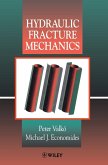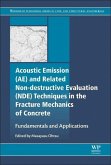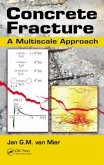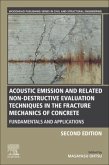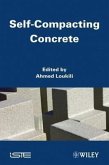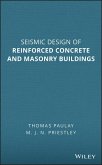FRACTURE MECHANICS OF CONCRETE AND ROCK This book offers engineers a unique opportunity to learn, from internationally recognized leaders in their field, about the latest theoretical advances in fracture mechanics in concrete, reinforced concrete structures, and rock. At the same time, it functions as a superb, graduate-level introduction to fracture mechanics concepts and analytical techniques. Reviews, in depth, the basic theory behind fracture mechanics * Covers the application of fracture mechanics to compression failure, creep, fatigue, torsion, and other advanced topics * Extremely well researched, applies experimental evidence of damage to a wide range of design cases * Supplies all relevant formulas for stress intensity * Covers state-of-the-art linear elastic fracture mechanics (LEFM) techniques for analyzing deformations and cracking * Describes nonlinear fracture mechanics (NLFM) and the latest RILEM modeling techniques for testing nonlinear quasi-brittle materials * And much more Over the past few years, researchers employing techniques borrowed from fracture mechanics have made many groundbreaking discoveries concerning the causes and effects of cracking, damage, and fractures of plain and reinforced concrete structures and rock. This, in turn, has resulted in the further development and refinement of fracture mechanics concepts and tools. Yet, despite the field's growth and the growing conviction that fracture mechanics is indispensable to an understanding of material and structural failure, there continues to be a surprising shortage of textbooks and professional references on the subject. Written by two of the foremost names in the field, Fracture Mechanics of Concrete fills that gap. The most comprehensive book ever written on the subject, it consolidates the latest theoretical research from around the world in a single reference that can be used by students and professionals alike. Fracture Mechanics of Concrete is divided into two sections. In the first, the authors lay the necessary groundwork with an in-depth review of fundamental principles. In the second section, the authors vividly demonstrate how fracture mechanics has been successfully applied to failures occurring in a wide array of design cases. Key topics covered in these sections include: * State-of-the-art linear elastic fracture mechanics (LEFM) techniques for analyzing deformations and cracking * Nonlinear fracture mechanics (NLFM) and the latest RILEM modeling techniques for testing nonlinear quasi-brittle materials * The use of R-Curves to describe cracking and fracture in quasi-brittle materials * The application of fracture mechanics to compression failure, creep, fatigue, torsion, and other advanced topics The most timely, comprehensive, and authoritative book on the subject currently available, Fracture Mechanics of Concrete is both a complete instructional tool for academics and students in structural and geotechnical engineering courses, and an indispensable working resource for practicing engineers.


